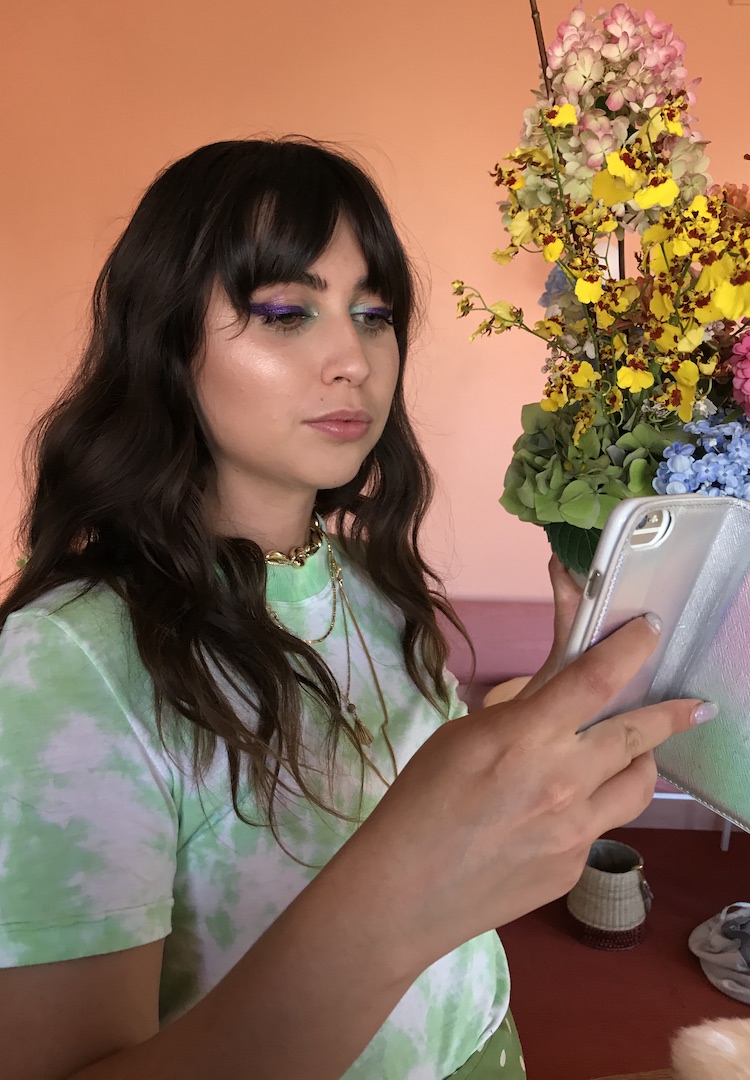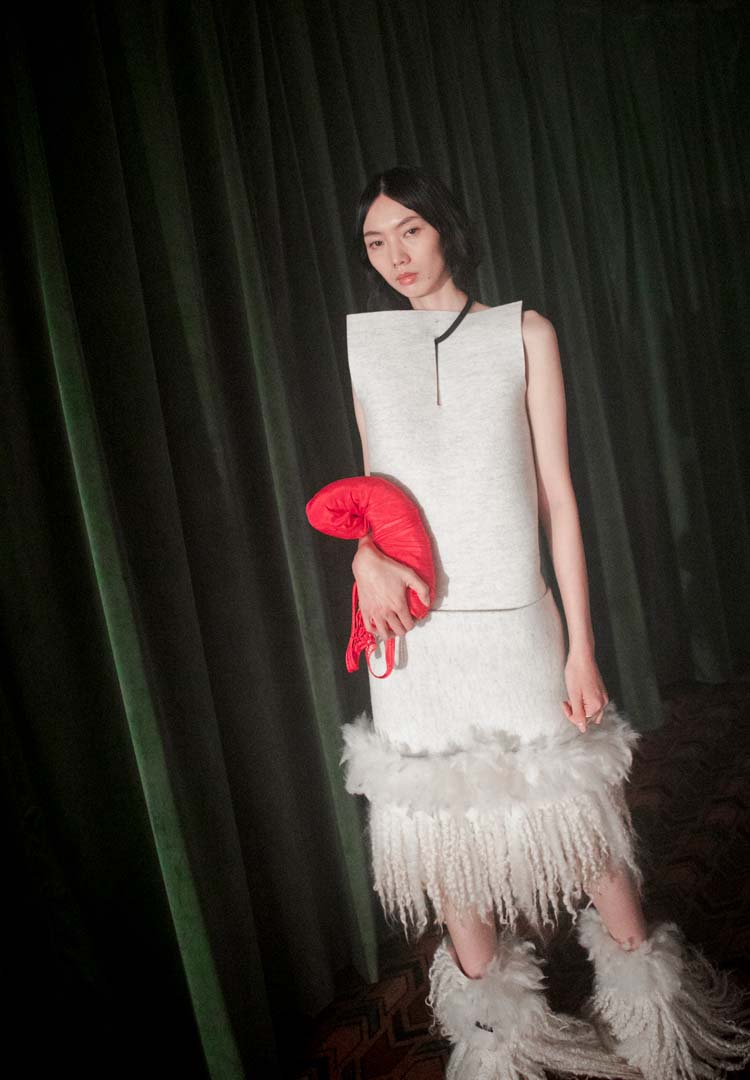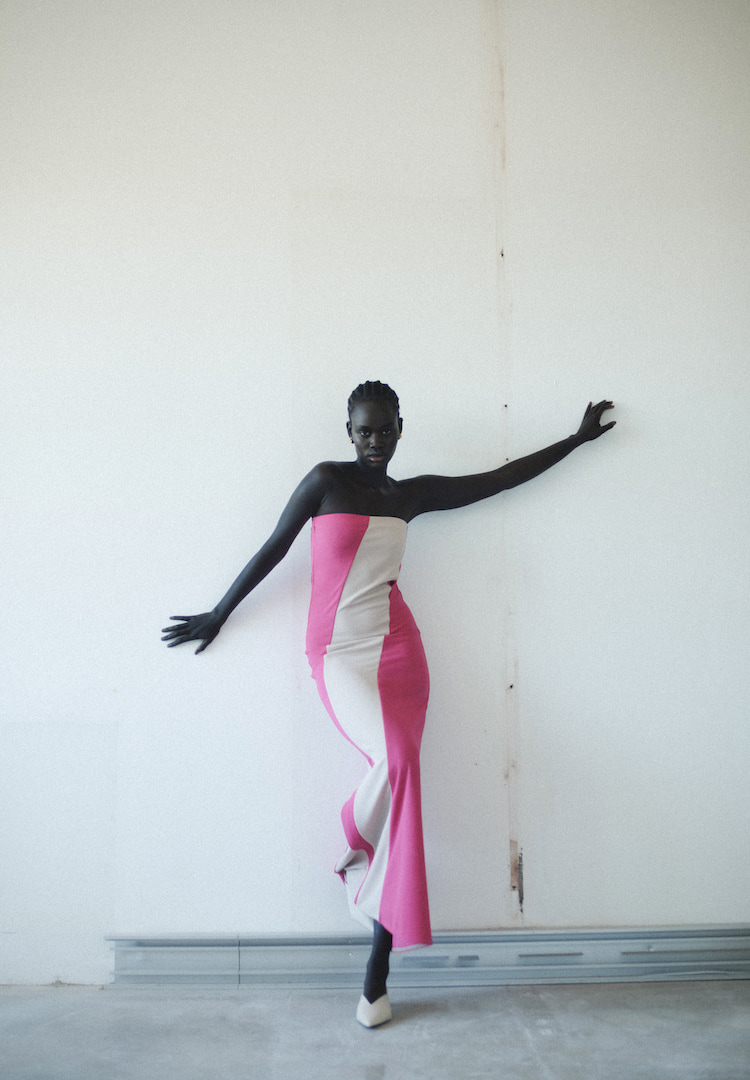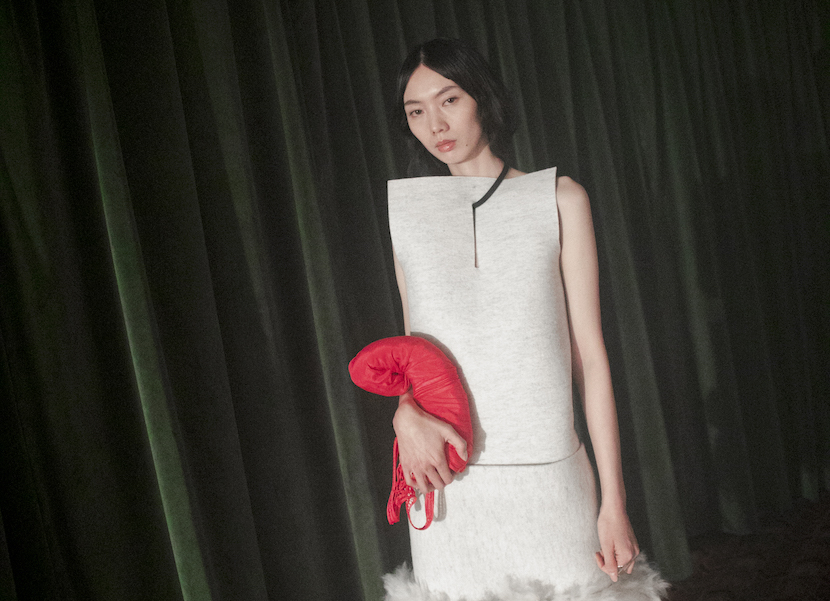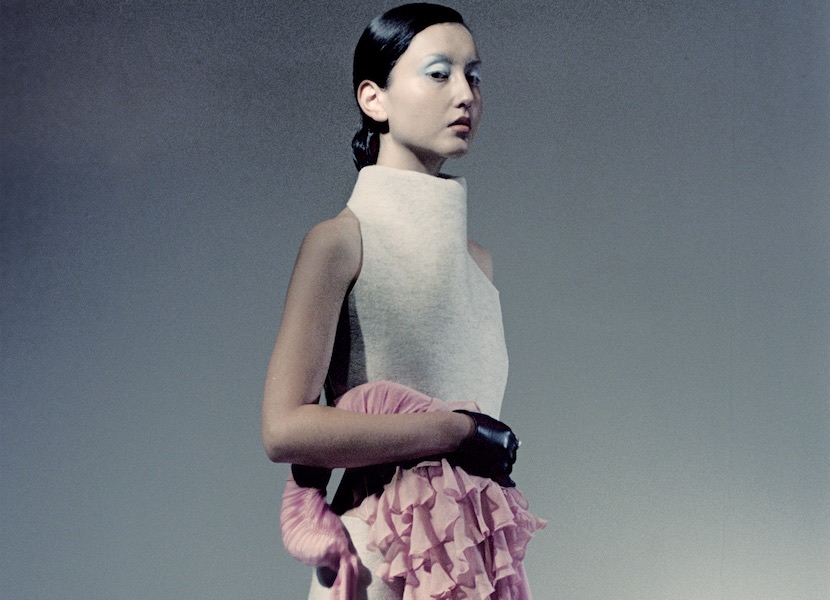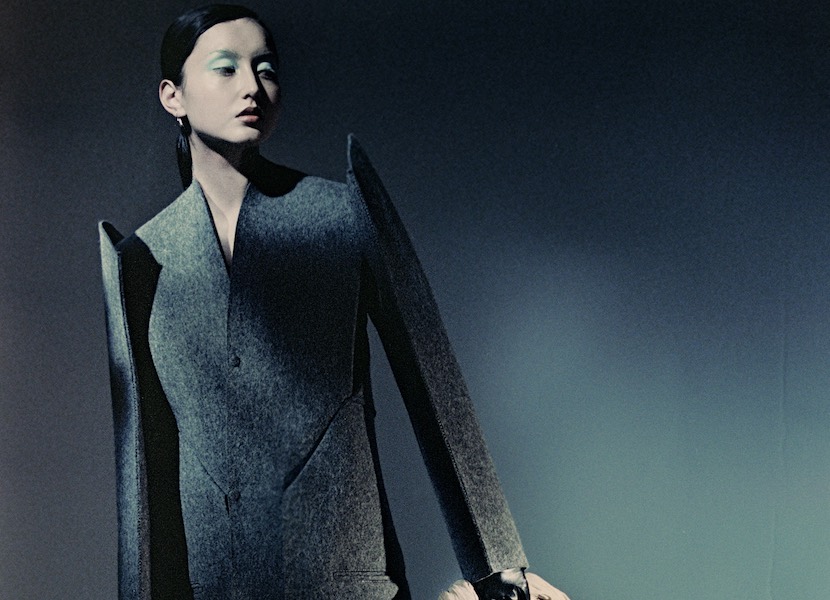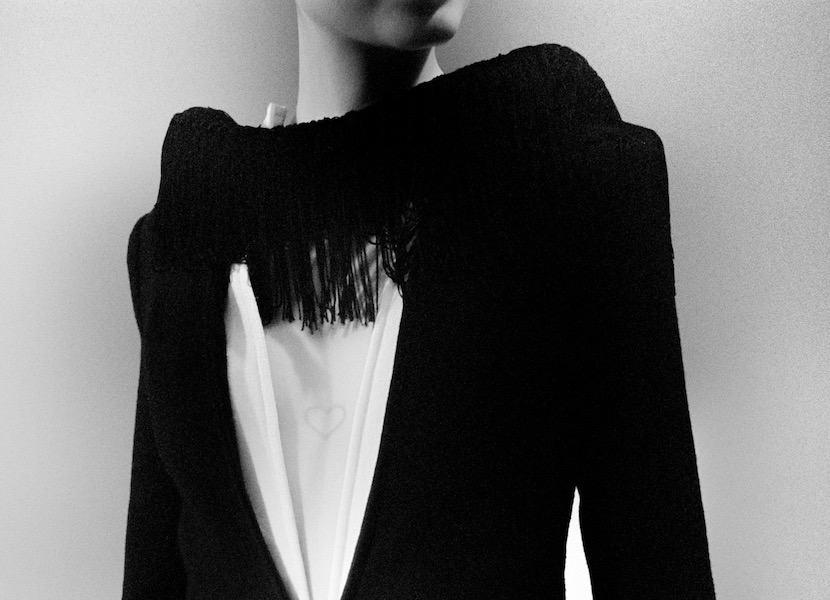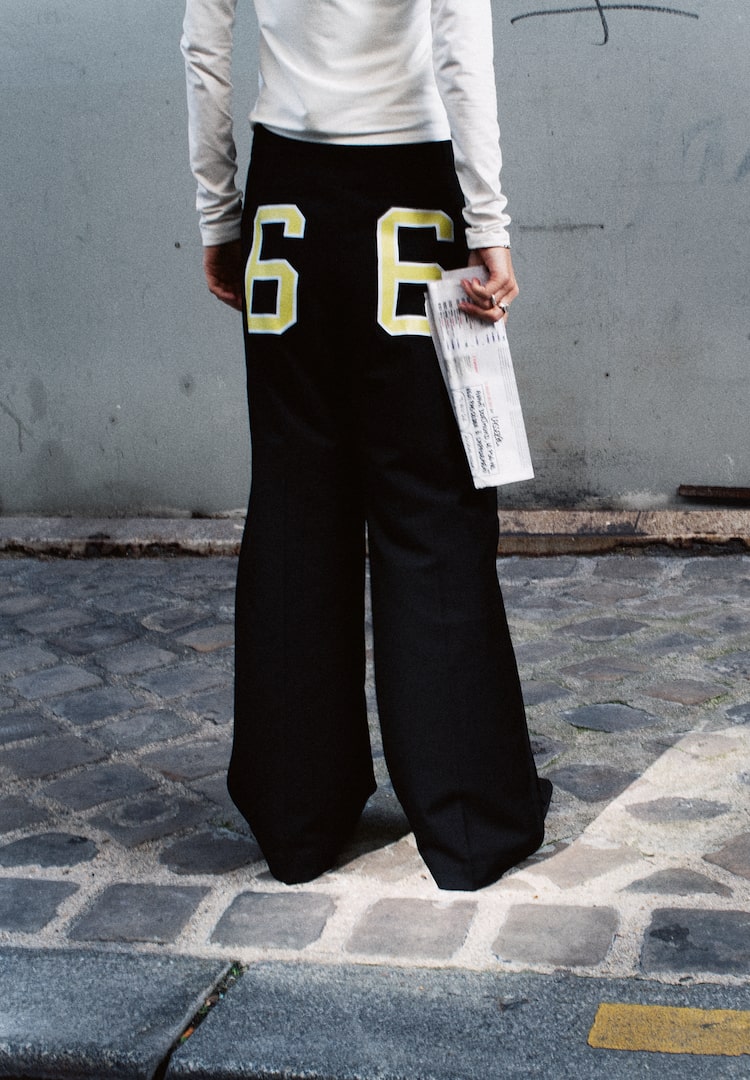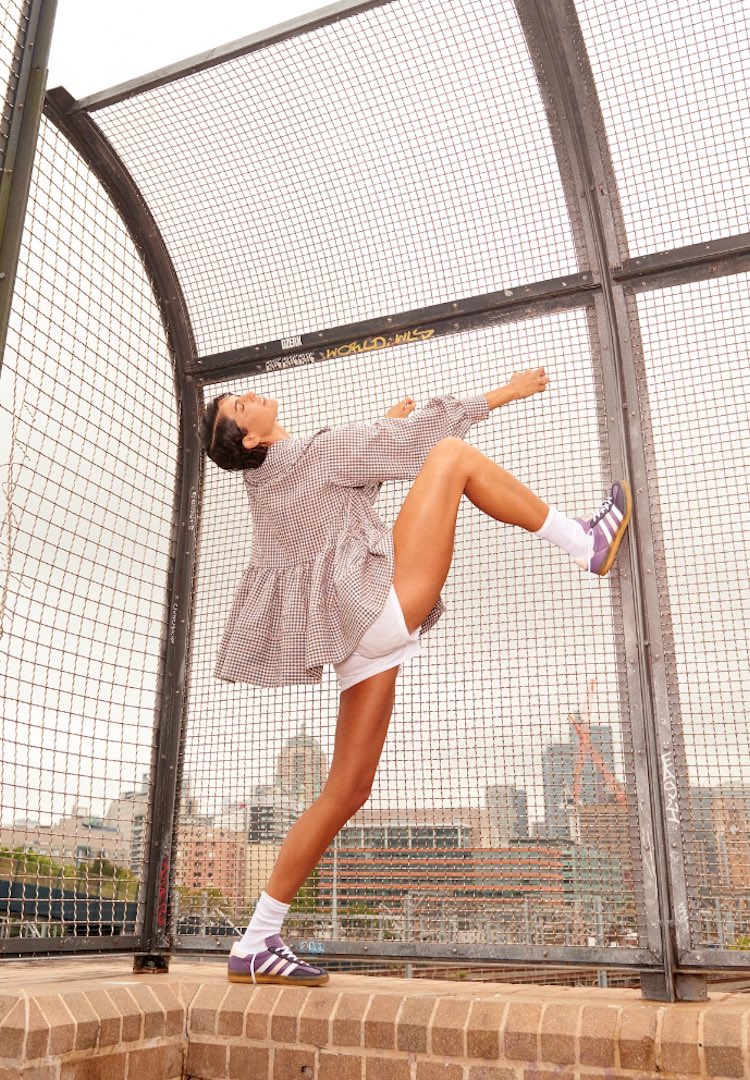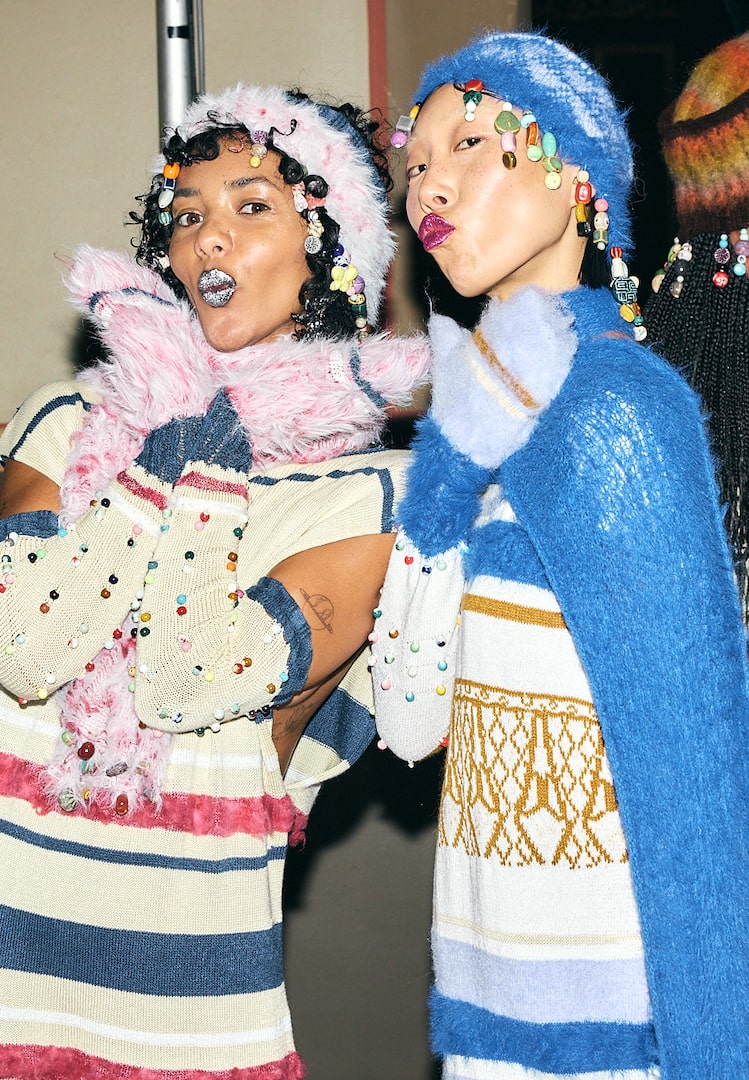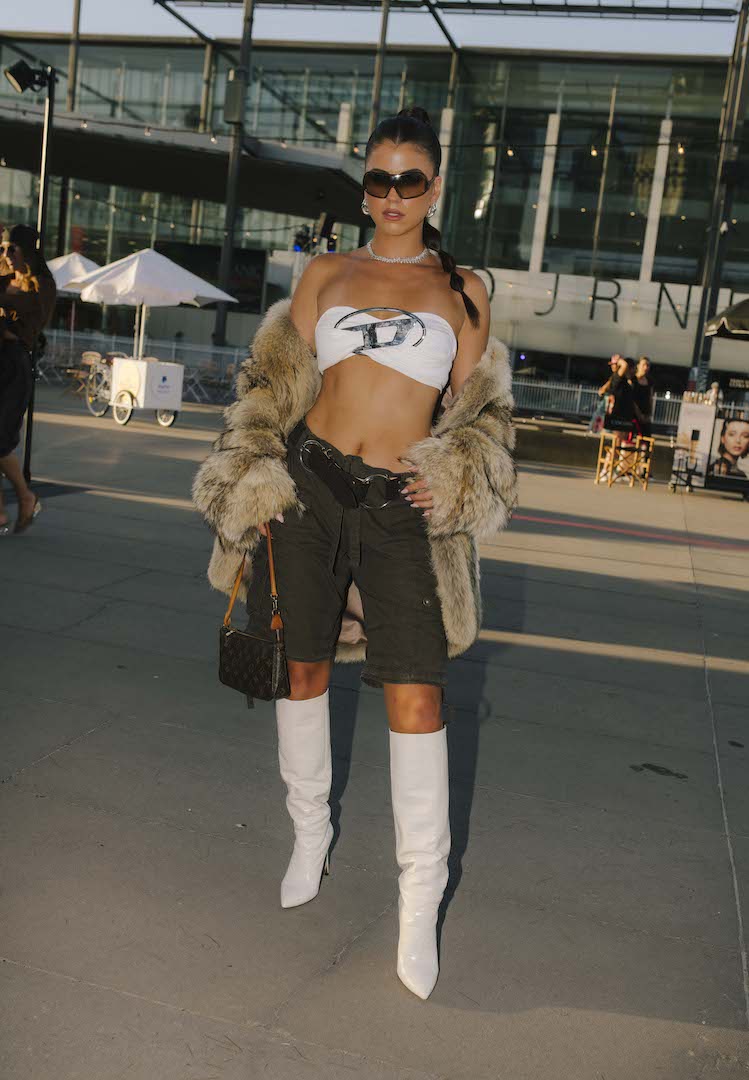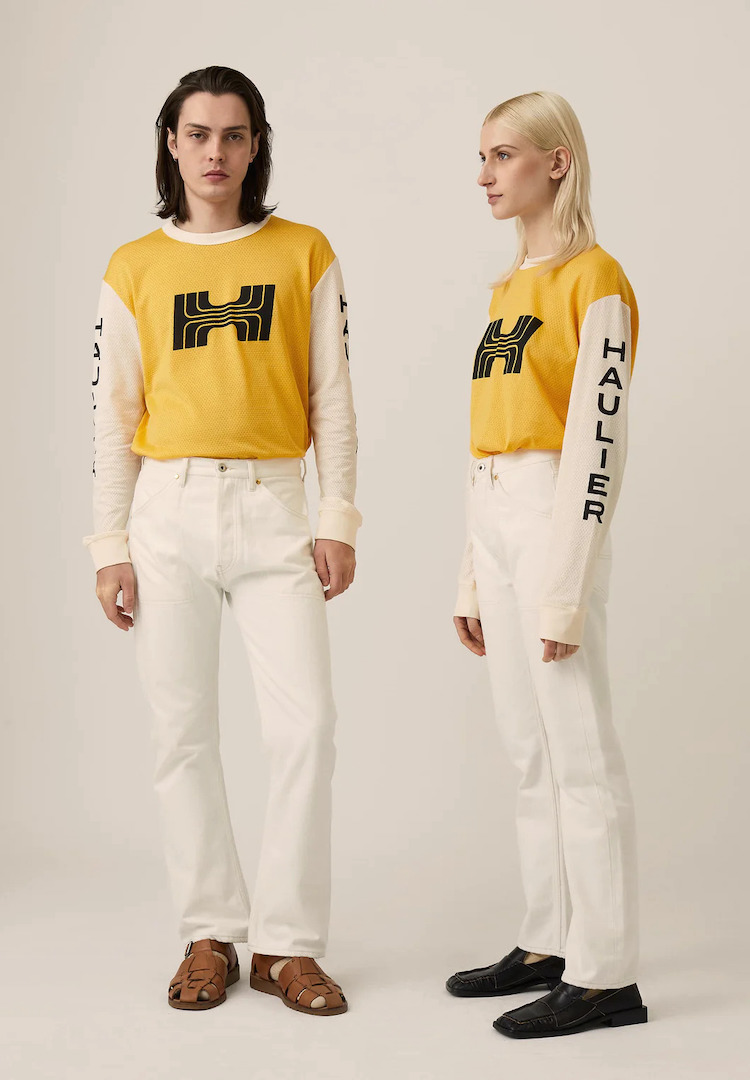Melbourne designer Michelle Li is creating a dialogue between movement and material
Photography by Hector Clark, Myles Pedlar, Hali Christou
Words by Gabrielle O’Hagan
Like poetry.
Creativity and originality reside in the grey areas, and Melbourne-based designer Michelle Li understands this more than most. The 24-year-old RMIT graduate and 2022 Australian Fashion Foundation and American Australian Association Scholarship award recipient has created an intriguing conceptual collection, Felt, Dress.
Her minimalistic designs celebrate the liminal space between thoughts, feelings and the different contexts and environments that we occupy. Felt, Dress is a product of Michelle’s interior life; she was inspired by the things she had observed, including art, literature, and her own perceptions of small, simple moments.
Want to follow Melbourne Fashion Festival more closely? Head to our Fashion section.
Michelle is fascinated by the relationship between materials and the human body and her collection is preoccupied with the shapes, angles and symmetry of our physical form, draping fabric over the body to complement its natural movement.
The wrapping and layering of materials create an added sense of mystery and uncertainty. By concealing the body in this way, Michelle invites the viewer to delve deeper into the ambiguity of her creations and form their own interpretations – an exercise she likens to reading poetry. The collection has earned her a spot among the top 10 designers at the 2022 National Graduate Showcase at PayPal Melbourne Fashion Festival.
Fashion Journal is excited to once again be supporting the National Graduate Showcase, presented by Samsung Galaxy, to celebrate Australia’s top-ranked emerging talent in fashion. A select number of leading fashion graduates from all over the country will exhibit their visionary collections in a digital presentation, showcasing cutting-edge design and innovation.
Over the next few weeks, we’ll be profiling each designer through a series of interviews. Next up is Michelle.
Please introduce yourself to our readers.
Hi, I am Michelle. I produce experimental fashion performances, make images and design womenswear. [After] growing up in Beijing, Chinese culture is an important part of my identity. I am currently based in Naarm.
View this post on Instagram
Tell us about your collection.
My graduate collection Felt, Dress bloomed from the seed [of] ‘in-between space’. I intend to prompt a space for thoughts and feelings to flow freely, as it is not black and white, the audience can come up with their own shade of grey.
The dress-wrapped forms are dresses [and] simultaneously forms. The felt-wrapped dresses are dresses [and] simultaneously sculptures/plinths and [they are] wrapping and folding concealed parts of the material. As Marina Abramovic wrote in Walking Through Walls 2016, “inviting the viewer to participate in the artistic experience”, the uncertainty and mystery “demanded imagination to take place”.
What were the major points of inspiration for your collection, and you more broadly as a designer?
I keep a journal, a collection of ideas, moments (vignettes), knowledge [and] references. From daily encounter[s] with people, readings [and] surroundings. A marking in thought, a collection of self. It could be as simple as one word. I see these as points of entry where I could dig deeper through research, or [I could] apply [them] in the design process. To process the seed through curation… allows originality to emerge.
My collaborators have inspired me so much! Daphane taught me research methods! Chantal showed me the importance of references and respect for the material. Blake prompt me to see the beauty in simplicity and encouraged me to trust the work. Hugh shared Joseph Beuys as an important reference. Ricarda questioned us to see the function of our design.
View this post on Instagram
Christine, Maia, Paris, and Billy bounced ideas back and forth in conversations. Jackie, Nadya, George, Alex, Mandy, Kim shared technical tips. My father Henry and [mother] Sally love me unconditionally. They all contributed to this work. Important conceptual references include the conceptual art movement: Juan Gris’s paintings [Purism movement], Material and Body by Masayuki Kurokawa and The Alchemist by Paulo Coelho.
Tell us about the experience of putting together your graduate collection.
The experience was organic, intuitive, and process-led. The ‘in-between space’ was the magnet that glued all the points together. I looked into the space between the ambiguity between asymmetry and symmetry. Joining pattern blocks in mirror symmetry, inspired by Juan Gris’s painting compositions, I restrained myself to only slicing and folding the shape. My first prototype, the felt coat, rose from draping. I had no aesthetic in mind. The outcome emerged from the dialogue between make and material. It felt magical, [like a] coincidence.
The rest of the collection was also developed by wrapping geometric shapes on the body, draping [and] then refinement. Fitting, visual documentation, annotation is a large part of the development. Noticing ‘fashion moments’ in relation to the concept, and subtracting what is unnecessary. Minimal seam lines and minimal fastenings allowed the material to express [itself] through movement. Control and chance. Working with thick materials, I discovered a life hack! Durable threads! I discovered [that] using good-quality threads can extend a garment’s longevity!
View this post on Instagram
Your designs centre on felt-wrapped dresses, which you call plinths. Can you tell us a bit about why?
In reference to Ducamp and Sélavy’s sculpture Fountain (1917). A ready-made urinal is elevated by [the] artist’s choice to separate them from their mundane context to be presented as art. I placed the dress-wrapped forms on top of the felt-wrapped dresses to give them new contexts.
Graduate collections have a tendency to be quite ‘excessive’ whereas yours seems decidedly understated. What steered you in this direction?
I’m pushing myself to be intentional with my material choice, colour, techniques, detailing. [I’m considering] why I am making this and what I hope this work [will] do. [In their] minimal form [my designs] could still convey ideas, similar to simplifying expressions in algebra.
What part does sustainability play in your design practice? And other ethical considerations?
In my studies at RMIT, I participated in a series of workshops facilitated by Dr Richard Bigolin. We were encouraged to reuse and up-cycle post-consumer waste materials within our design process, consider the garment’s social relationships and life cycle and to [develop an] awareness of what values, references, and connections are embedded within the design.
These frames guide[d] me in making design decisions. I worked with natural fibre[s] [like] wool [and] felt[s] that are biodegradable, durable, and malleable. As an Australian designer, I see [a] large potential in felting wool locks as an alternative to using animal fur. I reused and re-contextualised ready-made dresses from my mother Sally’s wardrobe into dress-wrapped forms.
View this post on Instagram
What about the Australian fashion industry needs to change?
Honestly, we need to switch to biodegradable alternatives for plastic in retail packaging! I think we need [to] revert back to produc[ing] high quality, collectible designs. Less quantity. To really treasure and love the pieces.
What’s next for you?
I am taking 2022 to ground myself, to continue designing and making. Extending ideas from my graduate collection into more wearable pieces. Establish[ing] a slow fashion design practice producing conceptual work. Collaborat[ing] with cross-disciplinary creatives.
I am sharing studio space with designers Jackie (Wackie Ju) and Nadya Kusumo (Toile Studios) for the next few months in Naarm. I feel very lucky to be in a community where we inspire and help each other to grow positively. With the scholarship provided by the Australian Fashion Foundation and American Australian Association, I’m planning on moving to NYC towards the end of the year.
Some of Michelle’s responses have been edited for clarity.
Explore the PayPal Melbourne Fashion Festival runway program here.

